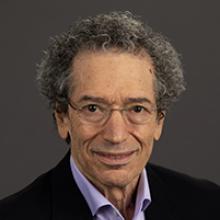Congressional Briefing: School Violence, Safety, and Well-Being: A Comprehensive Approach
Following the Parkland, Florida school shooting, students from around the country are rallying and advocating for change, in a manner more articulate and compassionate than their years suggest. Devoted to multi-dimensional, evidence-based prevention strategies, the National Prevention Science Coalition (NPSC) convened a Congressional Briefing on school violence on Friday, March 23, 2018 from 2:00-4:00 PM EDT.
The briefing was intended to bring together top thinkers and practitioners who recognize that our common goal is to achieve student safety and well-being in addition to the absence of violence. Student leaders were invited to join in this important endeavor. Their perspectives, experiences, and pleas are vital to our efforts to identify effective solutions to school violence that also promote general safety and well-being.
View the full coverage on C-SPAN here >>
This session should be of value to legislators/staffers, practitioners, law enforcement and school officials, students, regulatory agencies, social scientists, national and community organizations, and the foundation and corporate community.
Briefing Agenda
Speaking Upon their Arrival: Congressional Members
Welcome by Moderator: Dr. Michael B. Greene, Rutgers University
Welcome and Introductory Remarks: Dr. John Roman, Co-Director, National Prevention Science Coalition
Panels
Student Voice: Lauren Hogg, Freshman at Stoneman Douglas High School, Parkland, FL.
Lauren is a 14-year-old freshman at Stoneman Douglas High School in Parkland, FL. On February 14th Lauren lost four friends. Lauren grew up in California and moved to Florida when she was in 6th grade. Her parents are a public school teacher and a retired FBI Agent. During this briefing, she will personalize what the shooting means to the students who witness and experience these kinds of tragedies. She will also speak about the importance and meaning of youth organizing.
Promotion of Healthy School Cultures: Dr. Ron Avi Astor, University of Southern California
Systematically promoting a culture/climate of caring or kindness within the school involves five dimensions of school climate: School Bonding/Attachment; Justice/Safety (particularly fair and consistent enforcement of rules); Contribution or Student Voice; Interpersonal Relations (among students, teachers, administrators, and staff); and the Physical Setting of Schools. From a prevention science perspective, several evidence-based universal emotional and social skills development for use in schools are designed to promote well-being, interpersonal understanding, peaceful conflict resolution strategies, and prosocial behavior. Many of these programs are being successfully implemented in places throughout the country, though more needs to be done, including engaging parents and providing supports for families.
Identify and Effectively Respond to Early Warning Signs: Dr. David Osher, American Institutes for Research
In the aftermath of Columbine, several studies were conducted to assess the commonalities and differences among prior school-based rampage shootings. Three critical findings emerged: all of the perpetrators were male, all used rifles and/or assault weapons, and approximately 85 percent of the student shooters had told their peers about their plans. Less than 10 percent told school staff or law enforcement. Nearly all of the perpetrators, in retrospect, showed signs of some type of identifiable mental health disturbance. We need to establish guidelines for early warning signs and immediately intervene, without judgment or stigma, to screen and assess students who exhibit such signs and provide needed mental health services for those who require such services. Identification procedures should be taught to students, adults, and parents and they should be able to report their observations to designated adults in the school system who can conduct assessments and recommend treatment for those who need it with the goal to promote well-being for all.
Identification of Violent Threats and Implementation of Evidence-Based Threat Assessment: Dr. Dewey Cornell, University of Virginia
When a student (or adult) makes a threat, whether through social media, online, verbally, or through gestures), an accurate threat assessment procedure must be initiated. Such proposals have been developed based upon scientific evidence and need to be more widely adopted. Some schools have simply suspended students who verbalize such threats, whether in jest or not, and require them to get a letter from a mental health professional prior to returning to school. School Resource or School Safety Officers have sometimes criminally charged students as young as eight years old with terroristic threats. Neither of these punitive approaches improves safety or reduces crime in schools.
Best Practices for Recovery and Loss: Dr. David Schonfeld, University of Southern California
Every single school shooting deeply affects witnesses, friends, and families, and short- and long-term effects of loss and trauma are deep and far-reaching. Fortunately, evidence-based programs and strategies have been developed to help in the recovery process. Protocols and recovery practices will be outlined and discussed.
Sensible Gun Legislation: Professor Daniel Webster, John Hopkins University
Discussant: Dr. Dorothy Espelage, University of Florida
Reception
4:00-6:30pm EDT
Rayburn House Office Building, Room 2044
